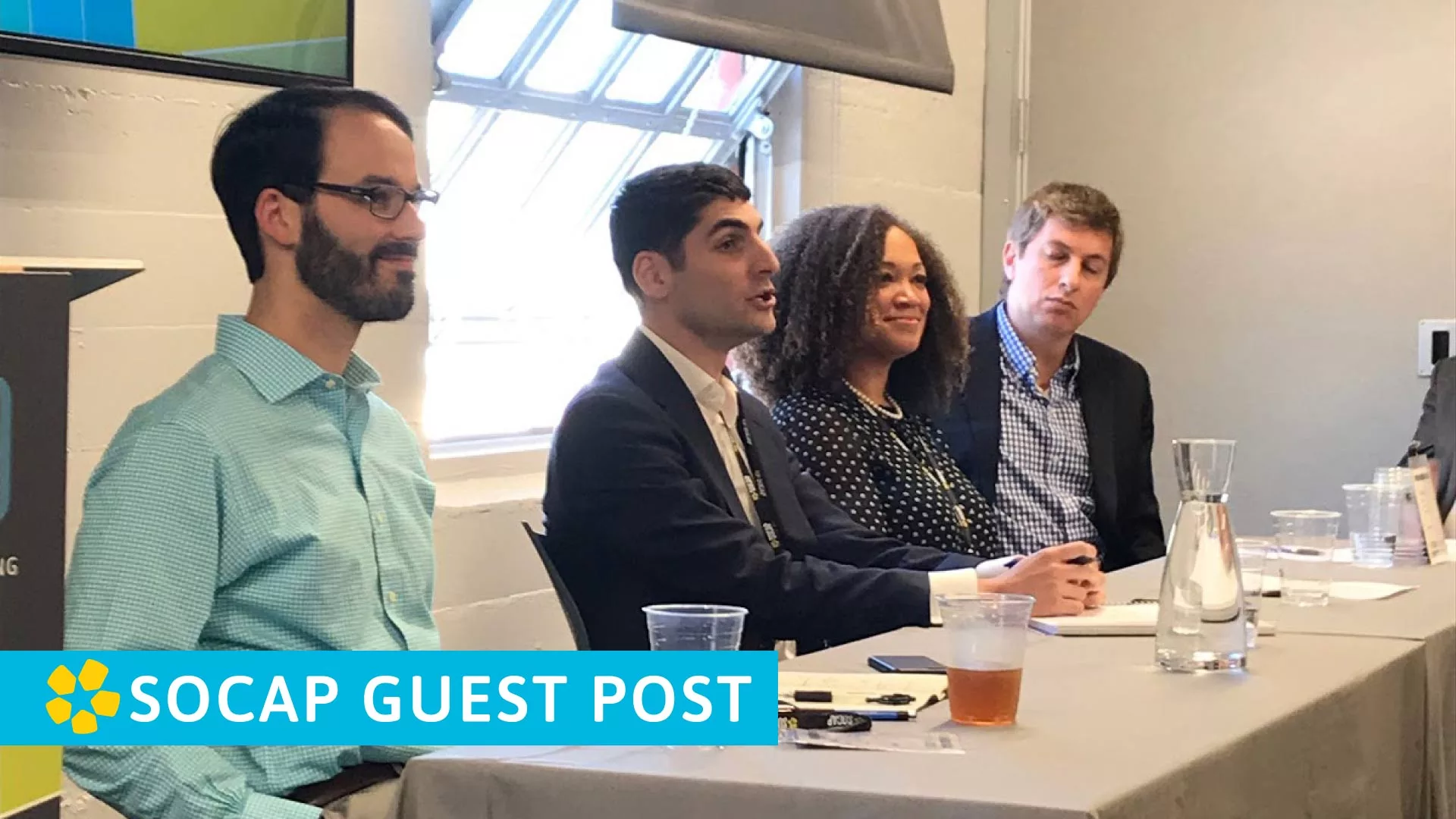A SOCAP guest post by Michael Etzel, Partner, The Bridgespan Group
Catalytic capital comes with the patience, risk tolerance, and flexibility ideally suited for impact investments. Family offices are critical catalytic capital champions and innovators, joining established institutional foundations that have been leading the charge for decades.
At SOCAP19 I had the privilege of moderating a panel of family office leaders about the opportunities for catalytic capital—and what’s holding us back. The panelists who joined me were, Lauren Booker Allen, Jordan Park; Barr Even, Dalio Philanthropies; and Adam Rein, CapShift.
During our conversation, these experts shared examples of what catalytic capital looks like in action and offered suggestions for how to get started.
Catalytic Capital in Action
Sometimes a family office can start as a donor for a social entrepreneur and evolve into a catalytic capital investor. Barr Even said that was the case for Grameen America, a US-based microfinance nonprofit started in 2008 financed in part by Dalio Philanthropies. Grameen’s business model focuses on accessible micro loans (generally $1,500–$2,700) for entrepreneurial women living in poverty in the United States. Dalio kick-started the business with an initial donation, then gave low-risk, low-cost additional capital to finance their balance sheet: 5-year debt that is cumulatively recycled 12 times as loans to female entrepreneurs over its term. Thanks in part to this support, Grameen has been able to serve 124,000 women with $1.3 billion in loans disbursed with a 99 percent repayment rate. Importantly, Dalio’s catalytic loans helped Grameen to grow and demonstrate a repayment track record, which has enabled it to raise $50 million of loan capital from traditional investors to date.
Kiva’s scale play into refugee lending is another great example of catalytic capital in action that Adam Rein discussed. In 2016, Kiva began lending to refugees through its crowdfunding platform and had confidence that their repayment rates would be similar to other populations. In raising the most recent tranche of the structured Kiva Refugee Investment Fund, traditional investors remained skeptical of projected repayment rates and the risk level implied. Kiva was able to offer multiple tranches of funds to attract investors with varying risk tolerances, which enabled catalytic capital investors to step up to the plate for the riskier components of the fund. Kiva’s thesis has been validated, finding that refugee borrowers have only a slightly lower average repayment rate (95.5 percent) versus the average global borrower repayment rate in their portfolio (96.8 percent).
How Can Families Get Started with Catalytic Capital?
Our panel reflected on the reality that the first step toward catalytic capital is often overcoming skepticism. As is the case for any hard decision, the combination of meeting family members where they are and building trust are critical to planting the seed for catalytic investing.
Lauren Booker Allen reiterated the importance of educating, socializing, and case-building with families. Assessing the value of catalytic capital, when it’s an appropriate tool, and how a family might incorporate it into their broader impact strategy is critical. Once a family is ready to get started, there is no one-size-fits-all approach for family offices to begin catalytic investing. Some family offices are large and established, with deeply set norms and business practices, while others are small and new to social impact as a whole and want to be personally involved in all decisions.
The panelists shared several ideas that might support family offices of all types to successfully incorporate catalytic capital approaches:
1. Set goals.
As a family office moves into the catalytic capital space, it’s important to set goals for impact and financial returns. What impact do you aim to achieve? And do you expect any return on your investment?
2. Find the right sandbox.
It’s often helpful to start small. Beginning with a flexible Donor Advised Fund (DAF) that offers impact investments (like those that partner with CapShift or ImpactAssets) can create a space for experimentation. Families may also choose to make a limited “carve-out” fund from their philanthropy budget or endowment for experimentation. For any family office, developing the right systems to structure deals is often a new challenge, so starting with a deal type that is relatively simple will minimize the learning curve.
3. Consider collaborating.
There are many catalytic capital investors of all types who may be open to building a collaboration that will grow their impact while sharing best practices. Partnering with an experienced catalytic capital provider, for example Kiva in the microfinance space, can help to ensure a smooth and learning-filled transition.
4. Consider the relationship between parts of the family office.
As mentioned above, there is often an organization firewall and set of cultural norms that makes mixing investing and impact challenging. It’s important to engage stakeholders from both the programmatic and investing sides of the house, and decide what the operating norms, limits, and decision rights should be.
5. Don’t skip financial underwriting.
Each family office may take a different approach when selecting the right budget and form to make catalytic capital investments. In all cases, however, financial underwriting is a critical step in understanding an investment and its potential performance. Financial underwriting also helps differentiate catalytic capital from other philanthropic endeavors.
6. Build experience in business model types and issue areas.
Focus on an issue area that the family office already has a strategic focus on and work to go deeper into social entrepreneur models that address those impacts. Start to build pattern recognition of what types of business models are the right fit for the office.
Our Conclusion
Our panelists closed the discussion with this observation: Family offices have a vital role to play in catalytic capital, but this requires creativity and commitment. Their focus on impact, combined with patience and flexibility, makes family offices ideal partners in advancing solutions in corners of the market not covered by institutional investors today.




